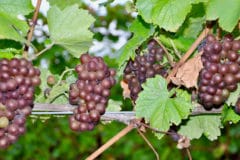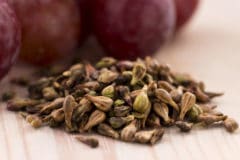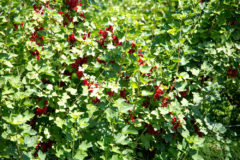The Scoop on Poop
For grapes, various types of manure are the best choices for fertilizer. Grapes need nitrogen to develop strong vines, good leaves, and tasty fruit. The best manure for your grapes is going to be either poultry or rabbit, with steer or cow (bovine) manure coming in a close second. Each of these organic fertilizers is rich in nitrogen.
You can also use ammonium nitrate, ammonium sulfate, and urea, but not until after your vines have flowered or fruit is about ¼ inch in diameter.
How Much Poop to Scoop
When using manure to fertilize grapes, you want to calculate the amount you’ll need per vine:
- Poultry – 5 to 10 pounds per v
- Rabbit – 5 to 10 pounds per vine
- Bovine – 5 to 20 pounds per vine
For the other fertilizers mentioned, use:
- Ammonium Sulfate – ½ pound per vine
- Ammonium Nitrate – ⅜ pound per vine
- Urea – ¼ pound per vine
Other Things to Feed Your Grapes
In addition to manure and nitrogen fertilizers, there are a few other nutrients your grapes can benefit from. Most notably, zinc and potassium are quite important to good grape growth.
Zinc is important to many plant functions, most especially pollination. Lack of zinc in your vines can cause small leaves, stunted shoots, and reduced fruiting. To combat or prevent these issues, use a zinc spray at a rate of one-tenth of a pound of zinc per vine.
Your vines will also let you know if there is a lack of potassium in their diet. Look for development of fewer shoots, yellowing of the plant, and burning in warmer months. To rectify a lack of potassium, apply three to six pounds of potassium sulfate, per vine, depending upon how severe the problem seems to be.
You can always have your soil tested if you’re unsure about the nutrient levels it contains. In addition to zinc and potassium, testing will identify other missing compounds in your soil.
For a shortage of magnesium you, can add a pound of epsom salts to every 100 square feet of soil. A lack of phosphorus can be corrected by adding 2 ½ pounds of bone meal (1-11-1) per 100 square feet.
For a potassium shortage, you may add 10 pounds of greensand to the entire area, or ¾ pound of potassium sulfate.












